The Museum Of UnCut Funk is celebrating the 50th anniversary of the March on Washington.
Legal challenges and demonstrations were cracking the foundations of segregation, but a Black person still couldn’t sit down and eat a hamburger or a piece of pie in a store that was all too willing to take his money for a tube of toothpaste.
Those four freshmen at North Carolina A&T College — Joseph McNeil, Franklin McCain, Ezell Blair Jr. and David Richmond — sat until the store closed, but they still didn’t get their coffee. But that day helped spark other sit-in protests — led by young people like themselves — that spread throughout the South in 1960, energizing the civil rights movement. And the Greensboro Woolworth desegregated its lunch counter later that year.
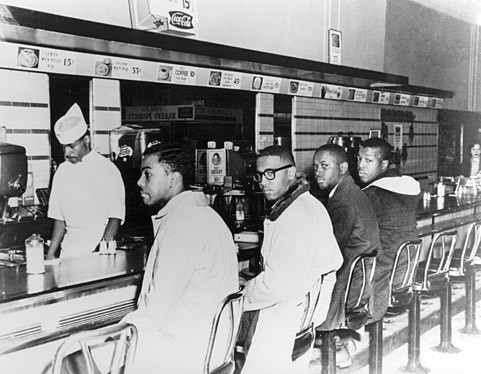
In February 1960, college students (from left) Joseph McNeil, Franklin McCain, Billy Smith and Clarence Henderson began a sit in protest at the whites-only lunch counter at a Woolworth’s in Greensboro, N.C
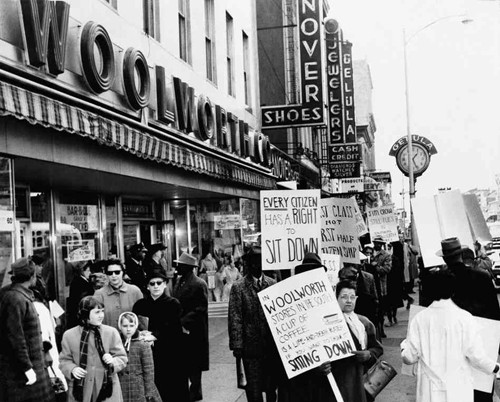
News of the Greensboro sit in spread. Here, Blacks in Atlantic City, N.J., protest against Woolworth’s segregated lunch counters, March 19, 1960.
It wasn’t the first time that food, or the lack thereof, figured large in the movement. Civil rights leaders ate so often at Paschal’s, a restaurant in Atlanta, that it was dubbed the unofficial headquarters of the movement. That was a choice born of necessity: Black-owned Paschal’s was one of the few white-tablecloth restaurants in the South where Black people would be seated.
Martin Luther King Jr., John Lewis, Andrew Young, Hosea Williams, Ralph David Abernathy and Joseph Lowery would strategize over Paschal’s abundant plates of Southern cooking: fried chicken, catfish, fried green tomatoes, collards and mac ‘n’ cheese. Co-owners and brothers Robert and James Paschal would provide free food and meeting space.
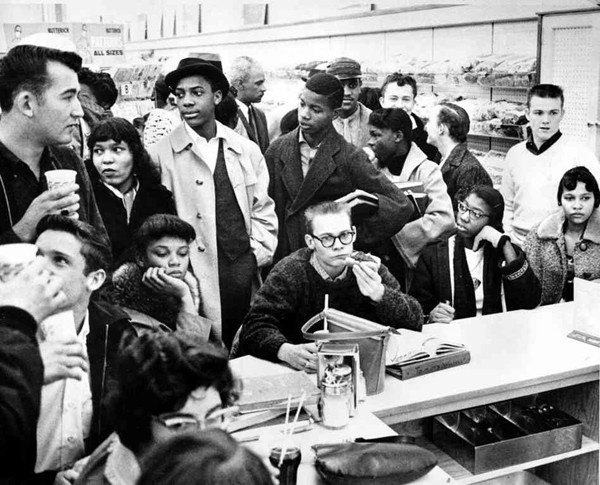
Three Black girls sit next to a white boy during a sit-in at a lunch counter in Portsmouth, Va., in February 1960. The demonstrators are largely students.
“Some of the decisions that affected the direction of the country were made in that restaurant,” Lewis, now a congressman from Georgia, told The New York Times in 1997. When in Alabama, leaders would meet at the impromptu restaurant in Georgia Gilmore’s house in Montgomery.
King knew Gilmore well; she had been involved in the 1955 Montgomery bus boycott from the beginning. Gilmore lost her job as a cafeteria cook after testifying in court in support of the 1955 bus boycott. So King asked her: Why not go into business for yourself?
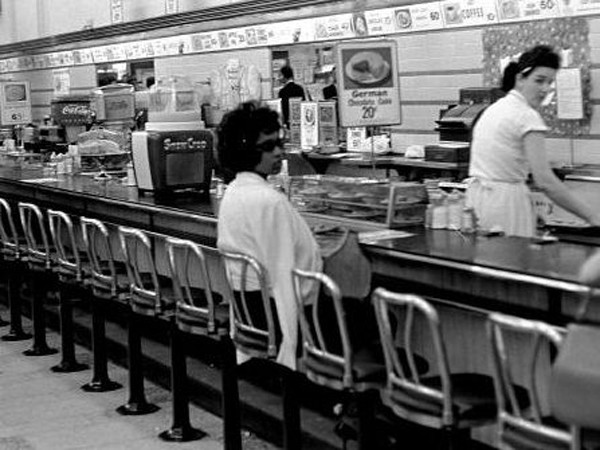
Black college student Dorothy Bell, 19, of Birmingham, Ala., waits in a downtown Birmingham lunch counter for service that never came, April 4, 1963. She was arrested with 20 others in sit-in attempts.
Her back-door restaurant became so popular that people waited in line to be fed. The crowds served as cover for King and other movement leaders, who held clandestine meetings there. “Pork chops, stuffed bell peppers. She would have chitlins with slaw and then take the hog maw and cut it up in them,” Pastor Thomas Jordan of Montgomery’s Lilly Baptist Church said “She could cook it, man.”
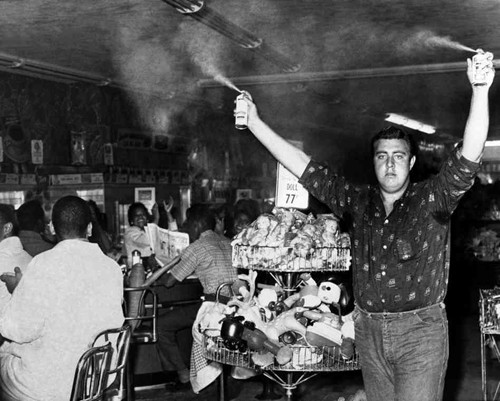
A white youth sprays insect repellent above the heads of nearly 100 Blacks demonstrating at a lunch counter in Atlanta.
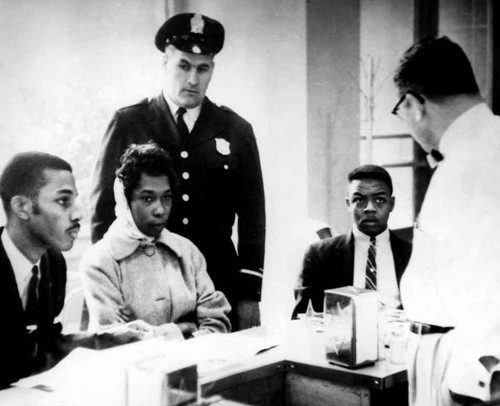
Victor Cobb (right), the manager of a dining room in Atlanta’s Trailways Bus Terminal, asks Black demonstrators to leave his lunch counter on March 16, 1960. The demonstrators stared at him in silence and refused to leave; they were then arrested.
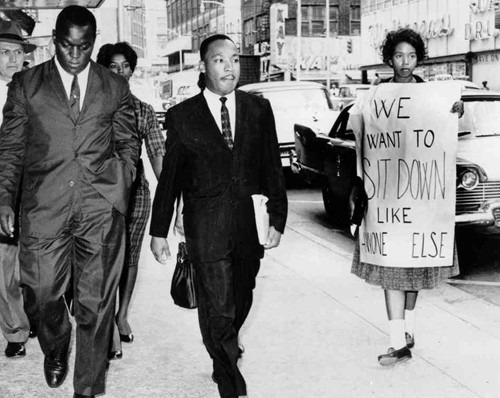
The Rev. Martin Luther King Jr. is escorted by an Atlanta police officer (left rear) after being arrested following demonstrations against lunch-counter segregation, Oct. 9, 1960.
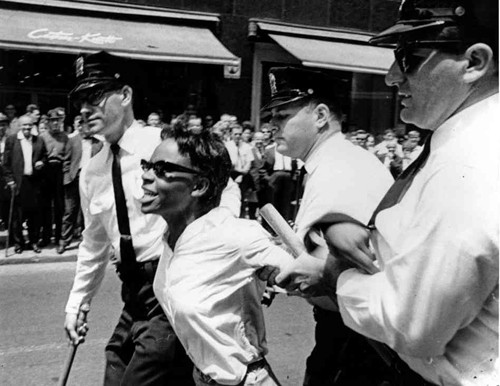
Bertha Gilbert, 22, is led away by police after she tried to enter a segregated lunch counter in Nashville, Tenn., on May 6, 1964.

Black students from Saint Augustine College study while participating in a sit-in at a whites-only lunch counter in Raleigh, N.C. Two waitresses pointedly ignore them from the other side of the counter.
This article was written by Nancy Shute.


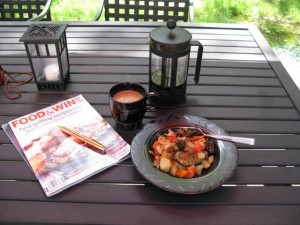
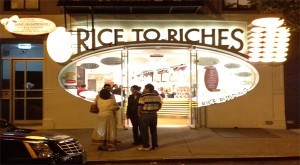
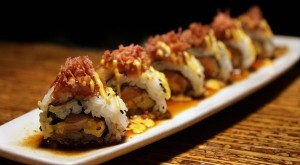

1 Comment
F*cked up that this happened in my parents lifetime… It is going to be a long time before this hate and mistrust ever goes away.